Cordula Zenk
Cape Verde Coordinator at GEOMAR
Tel: +49 431 600-4209
E-mail: czenk(at)geomar.de

Marine Biodiversity around Cape Verde
The high biodiversity around Cape Verde is fascinating and concerns pelagic habitats in the open sea as well as oxygen minimum zones and benthic habitats on the seafloor in the deep sea plains and on seamounts. The downwind sides of the sometimes towering islands of the volcanic archipelago provide shelter and calm water conditions. The coastal areas are also considered biodiversity hotspots, characterized by highly biodiverse and endangered communities and a high proportion of marine species found only here.
The long-standing cooperation between German and Cape Verdean partner institutions has created an extensive infrastructure with the Ocean Science Centre Mindelo (OSCM) to explore the biodiversity and ecology around Cape Verde.
Coastal Biodiversity
The narrow shelf belt and reduced intertidal zone, the seasonality of marine biological productivity, and precipitation conditions are factors that lead to a low population density of marine organisms in the archipelago, contributing to a diverse yet fragile ecosystem. The community structures and biogeography of the marine biota in Cape Verde are distinctly different from those of other Macaronesian islands, such as Madeira or the Canary Islands. It also differs from coastal systems in regions such as the Caribbean and the Indo-Pacific. The causes of the unique marine fauna on Cape Verde are considered to be the distance from the African continent and the diversity of the islands and their current conditions. These constitute a physical barrier and prevent mixing. This combination leads to the physical isolation of the landscape fragmented by natural conditions.
Coastal Ecosystem Monitoring in Cabo Verde (CEM_CV)
The CEM-CV project developed standards for a coastal monitoring program from 2019 to 2021 in a region where systematic ecosystem observations have been lacking to improve knowledge of the coastal marine environment and biodiversity around Cabo Verde. The project is part of the Meerwissen-Programme of the German Federal Ministry for Economic Cooperation and Development (BMZ).
In an intensive co-design process, local stakeholders and local as well as international scientists defined the requirements for such a monitoring program. With this approach, CEM_CV has laid the foundation for a monitoring program for coastal ecosystems that can be operated independently by local researchers and extended to other regions.
Deep-Sea Biodiversity
The Deep-Sea Biology research group at GEOMAR, in close cooperation with Cape Verdean colleagues, investigates the role of pelagic fauna in the oceanic carbon cycle, conducts time series studies of deep-sea biodiversity and observes the distribution and abundance of deep-sea fauna also in relation to environmental parameters such as temperature and oxygen.
To document deep-sea organisms in their natural environment, scientists conduct in situ observations with camera systems on towed and autonomous platforms and bottom observatories. Furthermore, organisms are also collected with nets and studied with modern molecular biology techniques such as eDNA and DNA barcoding. DNA analysis can also be used to detect a wide variety of deep-sea organisms in water or sediment samples.
This approach has already allowed the documentation of species never before observed in the Atlantic Ocean, new insights into the functioning of organisms in the oceanic ecosystem of the eastern Atlantic, and the prediction of the adaptive potential of organisms to a changing ocean.
Interview with Henk-Jan Hoving, Head of Research Group Deep-Sea Biology


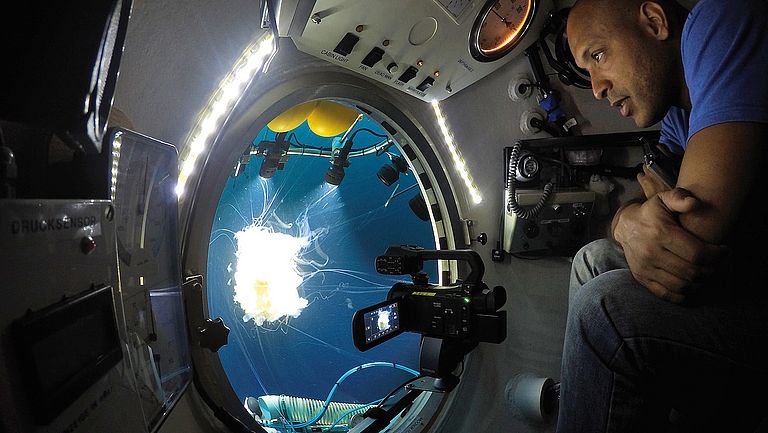
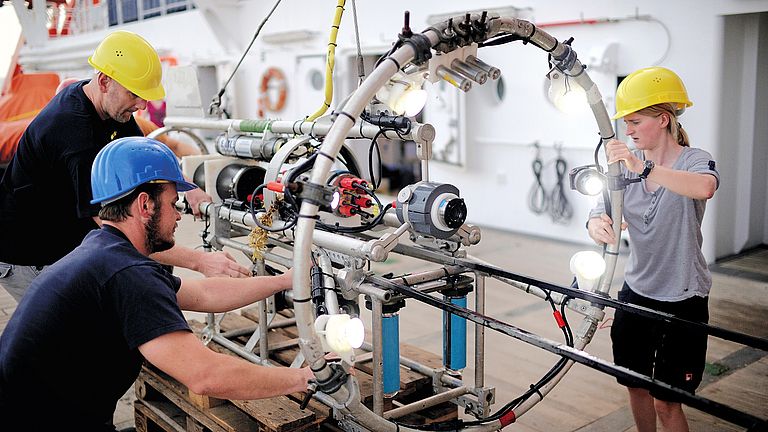
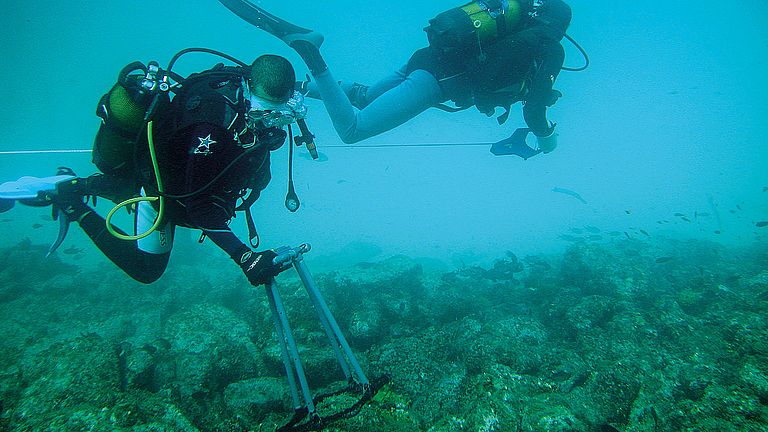
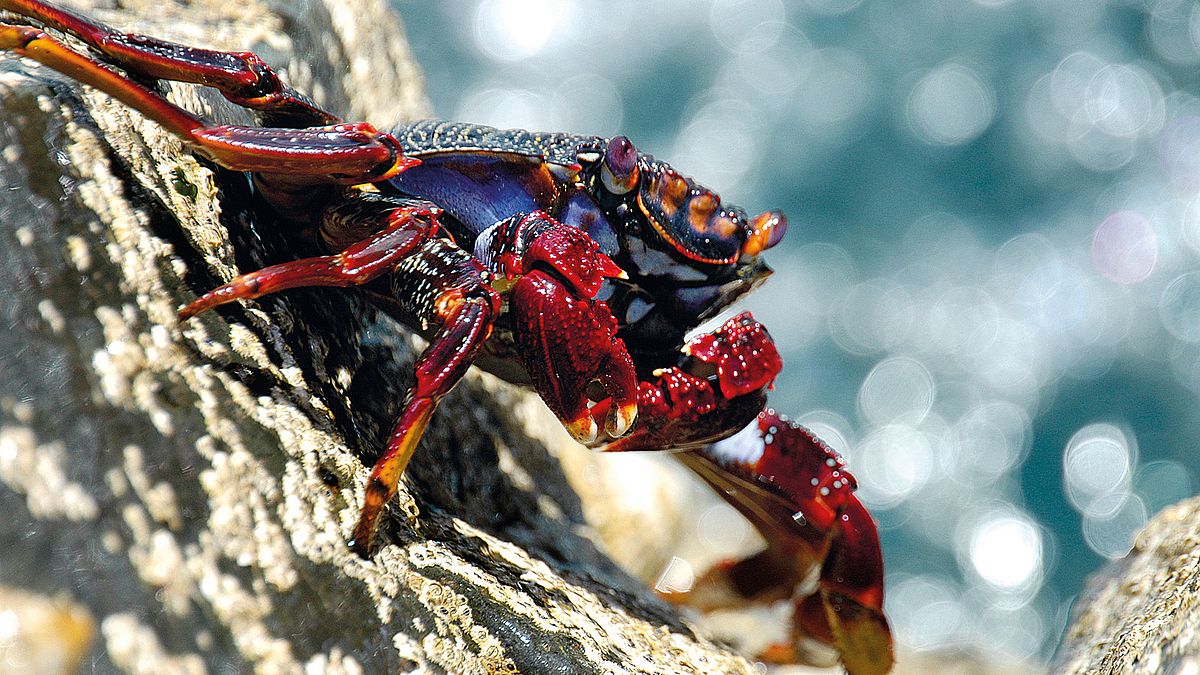

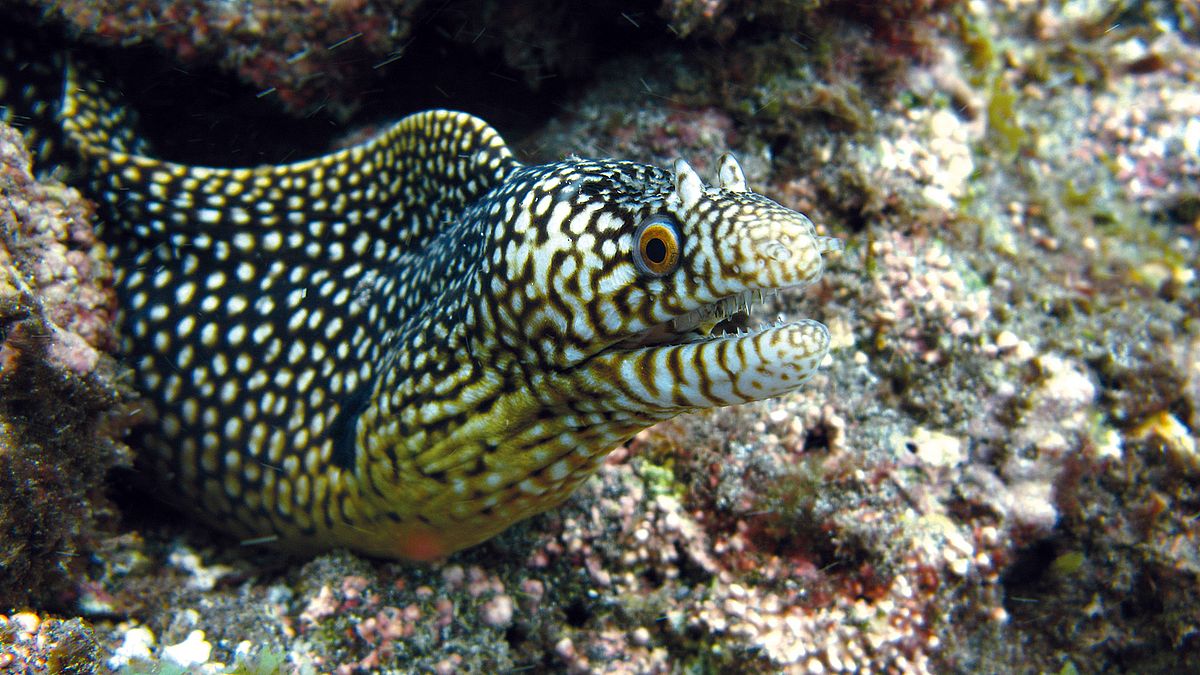
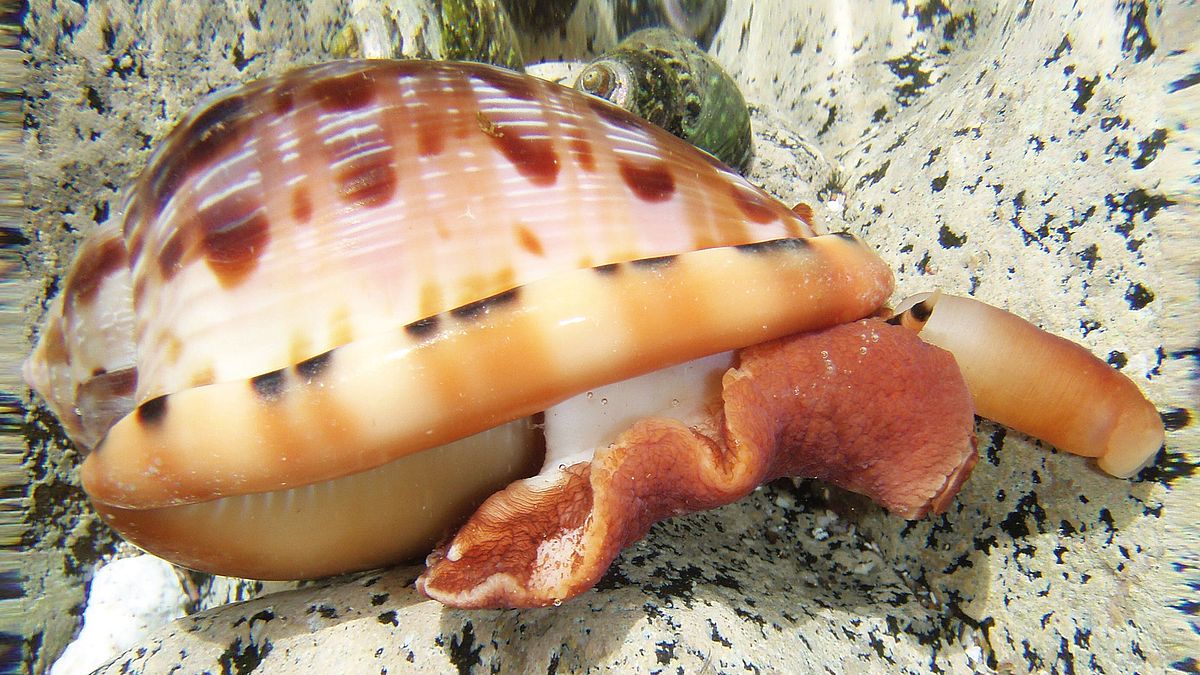

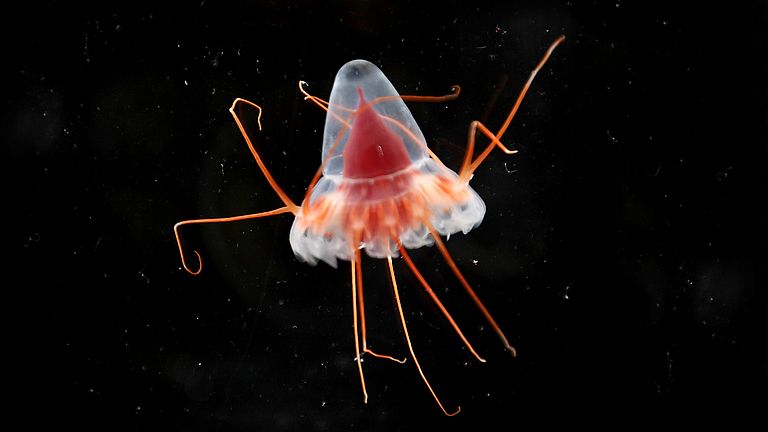

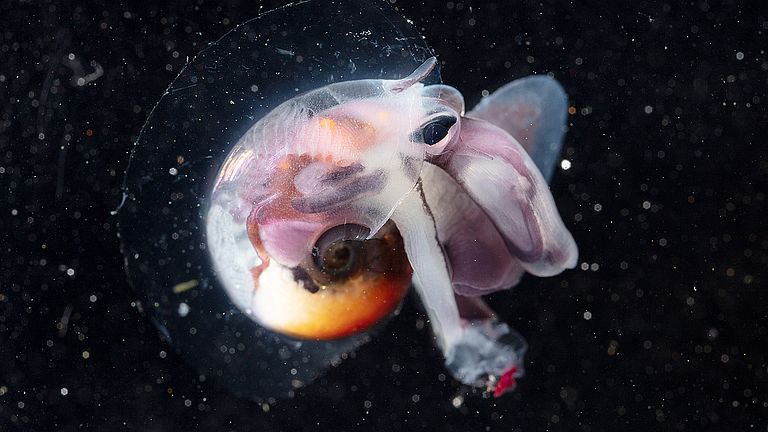
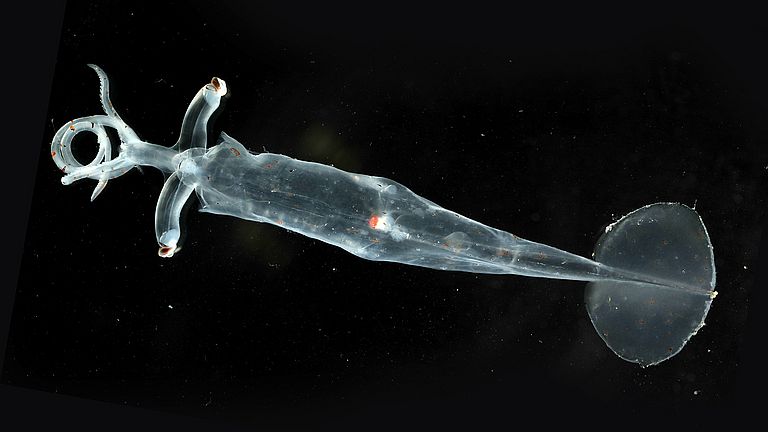
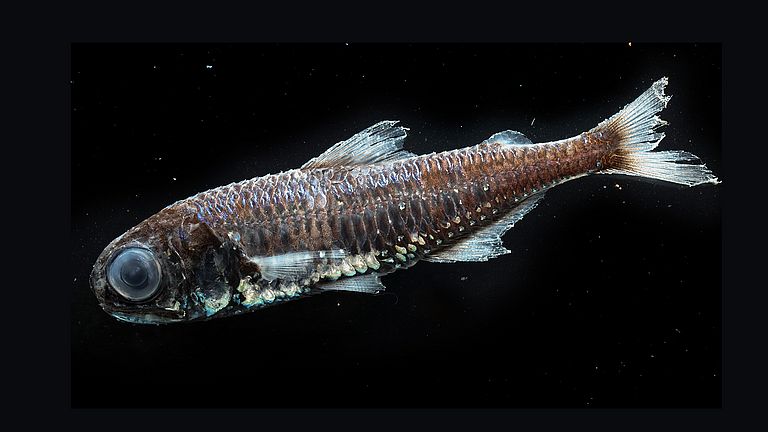
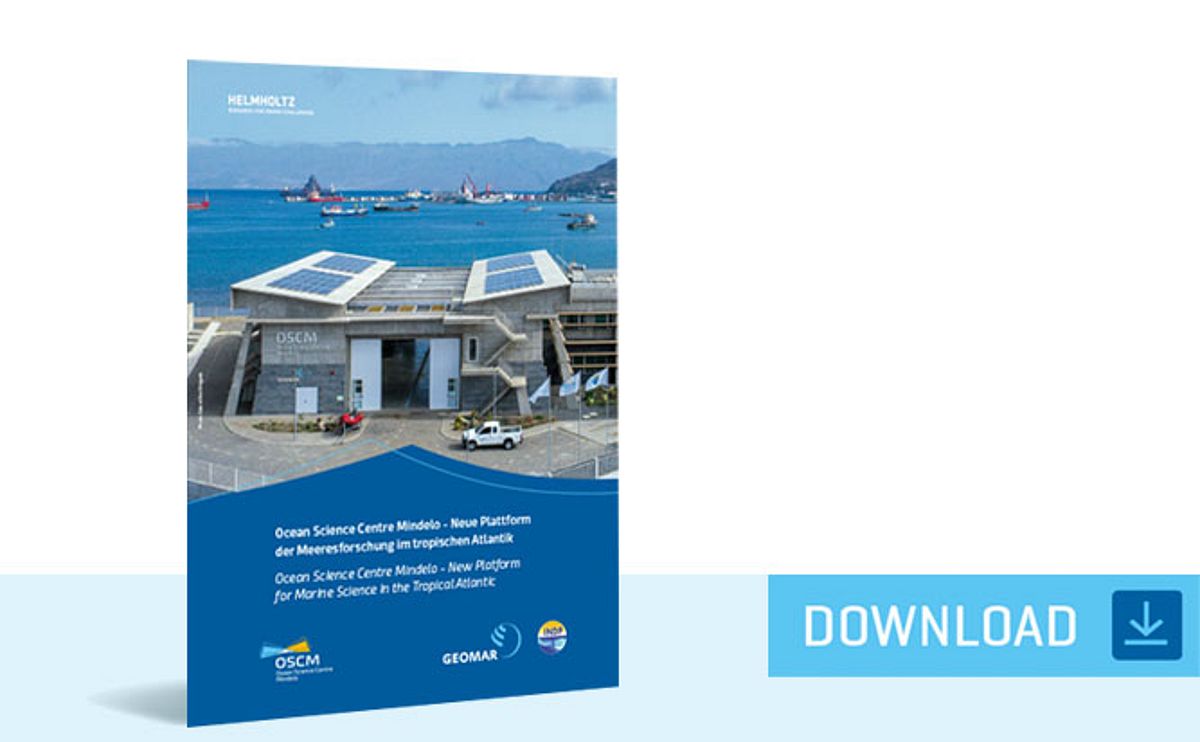

![[Translate to English:] Pyrosome in der Wassersäule. [Translate to English:] Pyrosome in der Wassersäule.](/fileadmin/_processed_/8/0/csm_Pyrosomes_PELAGIOS_POS532_4d6891d7ce.jpg)
